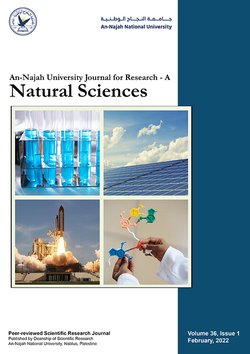Life Cycle Assessment of Olive Oil Tin and Plastic Containers
Authors:
Article info
2013-07-28
2014-09-17
1 - 24
Keywords
- ISO 14040-14043
- olive oil
- Life cycle assessment
- tin containers.
- plastic containers
Abstract
For a long period of time, Palestine has witnessed significantly noticeable shortages and scarcities of natural resources, namely, water and energy resources. Many industries adversely contribute in the continuous consumption and depletion of such natural resources. Among these, there are the packaging materials industries producing plastic and metal packaging containers for holding liquid products. Examples of such containers are tin and plastic containers used for packaging and storing olive oil in Palestine. These primary two packaging systems differ in their environmental impacts during the stages of processing, manufacturing, distribution, transportation, usage and disposal. More specifically, they differ in consumption of natural resources such as water, energy, and land use (solid wastes generation), as well as in their contribution to human toxicity and health problems (dust) and resulted industrial noise. This work aims at evaluating and comparing the potential environmental impacts of tin and plastic containers of olive oil via employing life cycle assessment (LCA) based on International Standardization Organization (ISO) standards (namely, ISO 14040, ISO 14041, ISO14042, and ISO 14043). The life cycle inventory and impact assessments considered the above-mentioned significant environmental domains (water, energy, solid waste, dust and industrial noise) in conducting the LCA. Within the boundaries of both systems, the LCA analysis showed that tin containers (16 Ls) outperformed plastic containers (16 L) in terms of having less environmental impacts.
Saleh, Y. (2015). Life Cycle Assessment of Olive Oil Tin and Plastic Containers. An-Najah University Journal for Research - A (Natural Sciences), 29(1), 1–24. https://doi.org/10.35552/anujr.a.29.1.1155
[1]Y. Saleh, “Life Cycle Assessment of Olive Oil Tin and Plastic Containers,” An-Najah University Journal for Research - A (Natural Sciences), vol. 29, no. 1, pp. 1–24, Feb. 2015, doi: 10.35552/anujr.a.29.1.1155.
Saleh, Yahya. “Life Cycle Assessment of Olive Oil Tin and Plastic Containers.” An-Najah University Journal for Research - A (Natural Sciences), vol. 29, no. 1, Feb. 2015, pp. 1–24. Crossref, https://doi.org/10.35552/anujr.a.29.1.1155.
1.Saleh Y. Life Cycle Assessment of Olive Oil Tin and Plastic Containers. An-Najah University Journal for Research - A (Natural Sciences) [Internet]. 2015 Feb;29(1):1–24. Available from: http://dx.doi.org/10.35552/anujr.a.29.1.1155
Saleh, Yahya. “Life Cycle Assessment of Olive Oil Tin and Plastic Containers.” An-Najah University Journal for Research - A (Natural Sciences) 29, no. 1 (February 2015): 1–24. https://doi.org/10.35552/anujr.a.29.1.1155.
تقييم دورة حياة العبوات البلاستيكية والتنك المعدني المستخدمة لتعبئة زيت الزيتون
المؤلفون:
معلومات المقال
2013-07-28
2014-09-17
1 - 24
الكلمات الإفتتاحية
- ISO 14040-14043
- olive oil
- Life cycle assessment
- tin containers.
- plastic containers
الملخص
تشهد فلسطين وبشكل كبير نقصاً ملحوظاً وندرة حادة في الموارد الطبيعية، خصوصاً موارد المياه، والطاقة والمواد الخام. تسهم العديد من الصناعات الفلسطينية سلباً في الاستهلاك المستمر وفي نضوب هذه الموارد الطبيعية. من بين هذه الصناعات تلك المنتجة لمواد التعبئة والتغليف البلاستيكية وكذلك الحاويات المعدنية المستخدمة في التعبئة والتغليف لبعض المنتجات السائلة. ومن الأمثلة على هذه الحاويات تلك المصنوعة من الصفيح (التنك) والبلاستيك على شكل عبوات تستخدم لتعبئة وتخزين زيت الزيتون في فلسطين. تختلف أنظمة التغليف هذه والمستخدمة لتعبئة زيت الزيتون هنا في فلسطين في تأثيراتها البيئية خلال مراحل التجهيز والتصنيع والتوزيع والنقل والاستخدام وكذلك في مرحلة التخلص منها. وبشكل أكثر تحديداً، فإنها تختلف في استهلاك الموارد الطبيعية مثل المياه والطاقة، واستخدام الأرض (إنتاج النفايات الصلبة)، وكذلك في مساهمتها في السمية البشرية والمشاكل الصحية (الغبار) وإنتاج الضوضاء الصناعية. تهدف هذه الدراسة إلى تقييم ومقارنة الآثار البيئية المحتملة والناتجة عن عبوات الصفيح والبلاستيك المستخدمة في تعبئة زيت الزيتون من خلال تقييم بيئي لدورة الحياة (LCA) استناداً إلى معايير ( (ISO 14040, ISO 14041, ISO 14042, ISO 14043. اعتمدت هذه الدراسة في إجراء تقييم دورة الحياة لنظامي التعبئة والتغليف على تحليل المخزون ودورة الحياة وعمليات تقييم الأثر في المجالات البيئية التالية: استهلاك المياه والطاقة، إنتاج النفايات الصلبة، والغبار والضوضاء الصناعية.وأظهرت نتائج التحليل تفوق اناء القصدير (16 ليتر) على إناء البلاستيك (16لترا) من حيث وجود تأثيرات أقل على البيئة.
Saleh, Y. (2015). Life Cycle Assessment of Olive Oil Tin and Plastic Containers. An-Najah University Journal for Research - A (Natural Sciences), 29(1), 1–24. https://doi.org/10.35552/anujr.a.29.1.1155
[1]Y. Saleh, “Life Cycle Assessment of Olive Oil Tin and Plastic Containers,” An-Najah University Journal for Research - A (Natural Sciences), vol. 29, no. 1, pp. 1–24, Feb. 2015, doi: 10.35552/anujr.a.29.1.1155.
Saleh, Yahya. “Life Cycle Assessment of Olive Oil Tin and Plastic Containers.” An-Najah University Journal for Research - A (Natural Sciences), vol. 29, no. 1, Feb. 2015, pp. 1–24. Crossref, https://doi.org/10.35552/anujr.a.29.1.1155.
1.Saleh Y. Life Cycle Assessment of Olive Oil Tin and Plastic Containers. An-Najah University Journal for Research - A (Natural Sciences) [Internet]. 2015 Feb;29(1):1–24. Available from: http://dx.doi.org/10.35552/anujr.a.29.1.1155
Saleh, Yahya. “Life Cycle Assessment of Olive Oil Tin and Plastic Containers.” An-Najah University Journal for Research - A (Natural Sciences) 29, no. 1 (February 2015): 1–24. https://doi.org/10.35552/anujr.a.29.1.1155.

Since 2019
Cite Score (Scopus): 0.8
Time to First Decision: 5 Days
Submission to Acceptance: 90 Days
Acceptance to Publication: 14 Days
Acceptance Rate: 22%
Call for Papers:
Sustainable Materials and Chemistry for Energy and Environmental Applications
Why should you
Publish With Us?
An-Najah National University
Nablus, Palestine
Nablus, Palestine
- P.O. Box
- 7, 707
- Fax
- (970)(9)2345982
- Tel.
- (970)(9)2345560
- (970)(9)2345113/5/6/7-Ext. 2628
- [email protected]
- EIC
- Prof. Waleed Sweileh
An-Najah University Journal for Research - A (Natural Sciences) by An-Najah University, Nablus, Palestine is licensed under CC BY-NC 4.0

